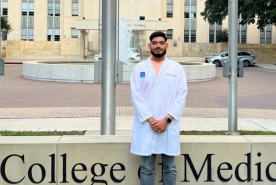Complement 3 glomerulopathy (C3G) is a rare kidney disease that has two forms: dense deposit disease (DDD) and C3 glomerulonephritis (C3GN). Each is caused by genetic or acquired problems in controlling the body’s complement system, which helps fight infections. Genetic problems can be inherited or not inherited. The acquired complications arise during a person’s life.
C3G can have a major impact on a person’s health. The signs and symptoms of DDD tend to appear earlier than those of C3GN (usually in adolescence). However, the signs and symptoms of either form of C3G may not begin until adulthood. People with C3G often have symptoms which are related to problems with the kidney and other parts of the body.
With kidney disease, the kidneys become less able to perform many vital functions, including removing wastes from the body, balancing the body's fluids, regulating blood pressure, and making the hormone that helps make red blood cells. The loss of kidney function in diseases like C3G can lead to numerous symptoms. The kinds of symptoms, and how bad they are, can vary a lot between people. Many of these symptoms might not be noticed until kidney disease gets much worse, so it is important to get your kidneys checked regularly and to be aware of these symptoms.
Common signs and symptoms of C3G (DDD or C3GN) that are related to a loss of normal kidney function include the following:
- Blood in the urine (hematuria): The urine color may look pink, red, or brown. Hematuria can have many causes, such as other diseases and infection. In C3G, tiny filtering units in the kidney (glomeruli) become damaged and leak red blood cells, which appear in the urine and change its color.
- Excess protein in the urine (proteinuria): This happens when higher than normal amounts of protein leak into the urine, causing the urine to look foamy, cloudy, and/or dark. Proteinuria is caused by damage to the glomeruli. In severe cases of proteinuria, called the nephrotic syndrome, symptoms in other parts of the body may occur.
- Swelling (edema): This occurs usually around the hands, feet, and ankles. There can also be puffiness around the eyes. Reduced kidney function can lead to a build-up of fluid, causing edema.
- Gout: When uric acid accumulates in joints and then crystalizes, it causes joint pain. This happens if the kidneys do not filter (remove) enough uric acid from the blood, leading to a buildup in the blood of uric acid, which deposits in joints.
- Recurrent infections: The complement system (the complement proteins) helps fight germs like bacteria and viruses. In C3G, the complement system is over-active and uses up its supply of complement proteins. This is thought to reduce the amount of complement proteins available to fight infections, so C3G patients may get sick often.
- Less urine made (oliguria): In advanced C3G, the kidneys cannot make a normal amount of urine, so people visit the bathroom fewer times and pass less urine during bathroom visits.
- High blood pressure (hypertension): Reduced kidney function can lead to fluid buildup, causing the pressure (or force) of the blood in the body’s arteries to be higher.
- Fatigue and reduced alertness: In C3G, the kidney’s reduced ability to remove wastes from the blood causes wastes to accumulate in the blood. These wastes can affect the brain, and cause a person to feel more tired than usual, or to have problems concentrating.
In addition to problems with the kidney, C3G can cause symptoms that may not be related to kidney function. For instance, damage to the eyes and abnormal distribution of fat may occur.
- Eye problems (drusen): This is caused by a buildup of deposits of complement proteins and fats in light-sensitive parts at the back of the eye (retina), which may cause vision problems later in life.
- Abnormal distribution of fat under the skin (acquired partial lipodystrophy): this is caused by a problem with the way the body uses and stores fat. In C3G, some people may have areas on their body that appear thin (where there is a lack of fatty tissue under the skin). This abnormal fat distribution results from destruction of fat cells by the complement system. Other areas might appear larger (where the extra fat is located).
C3G (DDD or C3GN) can also lead to kidney failure, meaning the kidneys no longer work, and dialysis or a kidney transplant are needed to survive. Healthy kidneys remove wastes and extra fluid from the blood. However, when kidneys fail, wastes and extra fluid can build up in the blood and make a person feel sick.
Signs and symptoms related to kidney failure (in addition to the symptoms listed above) include the following:
- Lack of appetite
- Nausea and vomiting
- Difficulty sleeping
- Dry and itchy skin
- Nighttime muscle cramps
Not all people will have these symptoms the same way. It is important to be aware of the above symptoms and to contact a healthcare professional if you or a family member has these symptoms or notices a sudden change in symptoms.

















